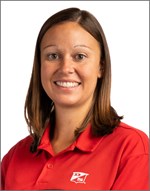Tip Back in Corn
BY Dairyland Seed Agronomy Team
As the corn crop continues to progress through grain fill, we are able to scout and begin monitoring kernel development. Some areas of the Dairyland Seed footprint have noticed some tip back or undeveloped kernels on the end of an ear caused by unsuccessful pollination. There are several causes to tip back such as silk clipping, delayed silk emergence, absence of pollen, and silk balling.

- Silk clipping occurs when insects such as corn rootworms or Japanese beetles feed on pollen and damage silks prior to or during pollination. The clipped silks can lead to incomplete pollination of the ear and, when the clipping occurs later in pollination, tip back can be observed.
- Delayed silk emergence can be caused by periods of doughty conditions prior to and during pollination. Tassels will mature normally and begin dropping pollen, but sometimes silk emergence is delayed. Emerged silks can remain viable for 10 days, but can become less receptive especially in high temperatures (+86°F) and low humidity.
- Absence of pollen can occur when temperatures exceed 100° These temperatures can kill corn pollen. Several consecutive days of these temperatures are required to impact pollination.
- Silk balling occurs when silks “ball up” or twist on the way to the end of the husk. This is rarely seen and instances are often hybrid specific.
If you have any questions about grain fill or tip back contact your Dairyland Seed DSM or Regional Agronomist for more information.
 |
 |
 |
 |
 |
| Brian Weller Western Region 507.456.3034 |
Dan Ritter Central Region 219.863.0583 |
Branden Furseth Northern Region 608.513.4265 |
Mark Gibson Eastern Region 260.330.8968 |
Amanda Goffnett Eastern Region 989.400.3793 |
